Home>diy>Building & Construction>How To Become A Safety Officer In Construction


Building & Construction
How To Become A Safety Officer In Construction
Modified: January 9, 2024
Learn the step-by-step process to become a safety officer in the building construction industry. Gain the skills and knowledge needed to ensure a safe working environment for construction workers.
(Many of the links in this article redirect to a specific reviewed product. Your purchase of these products through affiliate links helps to generate commission for Storables.com, at no extra cost. Learn more)
Introduction
Construction sites are inherently hazardous environments, with multiple potential risks and dangers. Ensuring the safety of workers and promoting a culture of safety is of utmost importance in the construction industry. This is where a safety officer comes in.
A safety officer, also known as a safety coordinator or safety inspector, plays a vital role in managing and maintaining safety standards on construction sites. Their primary responsibility is to identify potential hazards, implement safety protocols, and enforce compliance with safety regulations. In this article, we will explore the qualifications, responsibilities, and career path of a safety officer in the construction industry.
Becoming a safety officer in construction requires a combination of education, certification, training, and practical experience. While specific requirements may vary from one company to another, there are general qualifications that most employers look for.
Key Takeaways:
- Becoming a safety officer in construction requires a solid educational foundation, practical experience, and continuous training to ensure compliance with safety regulations and industry standards. Strong communication and interpersonal skills are vital for success in this role.
- Safety officers play a crucial role in promoting a culture of safety, conducting thorough inspections, and collaborating with stakeholders to ensure a safe work environment. Advancement opportunities include roles such as safety supervisor, construction safety manager, and occupational health and safety consultant.
Read more: How To Become A Construction Estimator
Qualifications and Education
To become a safety officer in construction, a solid educational foundation is essential. Most employers require a minimum of a high school diploma or equivalent, but many prefer candidates with a degree related to occupational health and safety or construction management.
Obtaining a bachelor’s degree in occupational health and safety, construction management, or a related field can provide a comprehensive understanding of safety principles, risk management, and construction practices. These programs typically include courses in industrial hygiene, hazard control, construction safety management, and emergency planning.
In addition to formal education, it is beneficial for aspiring safety officers to have practical experience in the construction industry. This can be gained through internships, apprenticeships, or working entry-level positions in construction-related roles. This hands-on experience helps in understanding the unique challenges and safety considerations specific to construction sites.
Furthermore, staying updated with the latest safety regulations and industry standards is crucial. Safety officers may need to complete continuing education courses or attend seminars to ensure their knowledge is current. Occupational Safety and Health Administration (OSHA) training courses, such as the OSHA 30-Hour Construction Industry Outreach Training, are highly regarded and can provide valuable certifications.
Being knowledgeable about construction materials, equipment, and processes is also important for a safety officer. They need to understand the potential hazards associated with various construction activities, such as working at heights, working in confined spaces, operating heavy machinery, and handling hazardous materials.
Strong communication and interpersonal skills are vital for a safety officer in construction. They must be able to effectively communicate safety protocols and regulations to workers, contractors, and management. Being able to communicate in multiple languages, particularly in diverse work environments, is an advantage.
While qualifications and education play a significant role, it’s important to note that experience and demonstrated competence are equally important. Many safety officers start their careers in entry-level positions in construction companies, gaining practical experience as they work their way up to becoming safety officers.
Certification and Training
In addition to education and qualifications, obtaining relevant certifications and undergoing specialized training is crucial for aspiring safety officers in the construction industry. These certifications and training programs validate their knowledge and skills, making them more competitive in the job market.
The Occupational Safety and Health Administration (OSHA) offers several certifications that are highly regarded in the construction industry. The OSHA 30-Hour Construction Industry Outreach Training is a comprehensive program that covers a wide range of safety topics, including fall protection, hazard communication, electrical safety, and more. This certification demonstrates a thorough understanding of OSHA standards and regulations.
Another valuable certification is the Construction Health and Safety Technician (CHST) certification, offered by the Board of Certified Safety Professionals (BCSP). This certification focuses specifically on construction safety and requires candidates to have a minimum of three years of experience in the field.
Additional certifications that can enhance a safety officer’s credentials include the Certified Safety Professional (CSP), Certified Safety and Health Manager (CSHM), and the Construction Site Safety Technician (CSST) certifications.
Furthermore, specialized training programs can provide safety officers with in-depth knowledge and skills in specific areas of construction safety. These programs may focus on topics such as scaffolding safety, crane operations, excavation and trenching safety, or electrical safety.
It is important for safety officers to stay updated with the latest industry trends and regulations. Regularly attending conferences, workshops, and seminars related to construction safety can provide valuable insights and networking opportunities. Additionally, joining professional associations such as the American Society of Safety Professionals (ASSP) or the National Safety Council (NSC) can provide access to resources, training, and certifications.
It is worth mentioning that each country may have specific certifications and training requirements for safety officers in the construction industry. Researching and understanding the regulations and standards set by the governing bodies in your region is essential to ensure compliance.
By obtaining relevant certifications and undergoing specialized training, safety officers can demonstrate their commitment to professional development and their ability to effectively manage safety in construction environments.
Knowledge and Skills
To excel as a safety officer in the construction industry, a combination of knowledge and skills is necessary. Safety officers need to have a strong understanding of safety regulations and standards, as well as possess certain skills to effectively manage and promote a safe work environment.
First and foremost, safety officers must have extensive knowledge of construction site safety regulations. They need to be familiar with local, state, and federal safety guidelines, as well as industry-specific regulations. This includes understanding OSHA standards, building codes, and other relevant safety requirements.
They should have a solid understanding of various construction processes and activities to identify potential hazards effectively. This includes knowledge of working at heights, excavation and trenching safety, electrical safety, fire prevention, and more. Being well-versed in safety protocols for using tools and equipment commonly found on construction sites is also important.
Organizational skills are essential for safety officers. They need to effectively manage and maintain safety documents, such as safety inspection reports, incident reports, and training records. Being able to organize and prioritize tasks is critical to ensure safety protocols are followed consistently.
Strong communication skills are vital as safety officers frequently interact with workers, contractors, and management. They must be able to articulate safety protocols clearly and concisely and effectively communicate hazards and risks. Active listening skills are also crucial for understanding and addressing workers’ safety concerns.
Problem-solving skills are invaluable in the construction industry, where unforeseen issues often arise. Safety officers need to be able to react quickly, assess situations, and develop effective solutions to diminish potential risks or hazards. They must be able to adapt and make sound decisions that prioritize worker safety.
A keen eye for detail is necessary to identify potential hazards and ensure safety protocols are followed. Safety officers should be observant and proactive in recognizing unsafe practices and conditions. They should also possess the ability to conduct thorough safety inspections, audits, and risk assessments.
Lastly, safety officers should have strong leadership and interpersonal skills. They need to be able to inspire and motivate workers to prioritize safety and adhere to safety protocols. Building positive relationships with workers and fostering a culture of safety is vital in ensuring a safe and productive construction environment.
By possessing the necessary knowledge and skills, safety officers can effectively enforce safety standards and create a culture of safety within the construction industry.
Responsibilities of a Safety Officer
The role of a safety officer in the construction industry is multi-faceted and involves various responsibilities to ensure the well-being of workers and compliance with safety regulations. Let’s explore some of the key responsibilities performed by safety officers:
1. Developing and Implementing Safety Policies: Safety officers are responsible for developing and implementing safety policies and procedures tailored to the specific needs of the construction site. This includes creating protocols for hazard identification, risk assessment, emergency response, and accident prevention.
2. Conducting Safety Inspections and Audits: Safety officers conduct regular inspections of construction sites to identify potential hazards, unsafe practices, and areas for improvement. They assess the effectiveness of safety measures and ensure compliance with safety regulations and standards.
3. Training and Educating Workers: Safety officers provide training and education to workers on various safety topics, such as personal protective equipment (PPE) usage, fall protection, fire safety, and equipment operation. They ensure that workers have the necessary knowledge and skills to perform their tasks safely.
4. Enforcing Safety Regulations: Safety officers enforce safety regulations and policies, taking appropriate action to correct non-compliance. They observe work activities to ensure that safety protocols are followed and intervene when necessary to prevent accidents or injuries.
5. Incident Investigation and Reporting: In the event of accidents, injuries, or near misses, safety officers are responsible for investigating and documenting the incidents. They analyze the root causes and make recommendations to prevent similar incidents from occurring in the future.
6. Conducting Safety Meetings: Safety officers conduct regular safety meetings with workers and management to discuss safety concerns, educate about new protocols, and address any questions or issues. They serve as a liaison between workers and management to promote a collaborative approach to safety.
7. Monitoring and Evaluating Safety Programs: Safety officers monitor the effectiveness of safety programs and initiatives, collecting data and analyzing trends to assess their impact. They continuously seek opportunities for improvement to enhance the overall safety performance of the construction site.
8. Collaboration with Stakeholders: Safety officers collaborate with various stakeholders, including contractors, project managers, and regulatory authorities. They coordinate efforts to ensure that all parties are working collectively towards maintaining a safe construction environment.
9. Keeping Abreast of Safety Regulations: Safety officers stay updated with the latest safety regulations and industry standards to ensure compliance. They attend training sessions, seminars, and conferences to expand their knowledge and stay informed about emerging safety practices.
10. Promoting a Safety Culture: Safety officers play a crucial role in promoting a culture of safety within the construction industry. They lead by example and work towards creating an environment where safety is prioritized and each worker takes responsibility for their own and their colleagues’ well-being.
By fulfilling these responsibilities, safety officers contribute to maintaining a safe work environment and minimizing accidents and injuries in the construction industry.
Read more: How To Become A Construction Inspector
Understanding Safety Regulations and Standards
As a safety officer in the construction industry, it is vital to have a comprehensive understanding of safety regulations and standards that govern construction sites. Compliance with these regulations ensures the well-being of workers and promotes a safe working environment. Let’s delve into some key safety regulations and standards that safety officers must be familiar with:
Occupational Safety and Health Administration (OSHA): The Occupational Safety and Health Administration sets regulations and standards to protect workers from occupational hazards. Safety officers must have in-depth knowledge of OSHA standards, such as the General Duty Clause, which requires employers to provide a safe workplace, and specific regulations related to fall protection, hazard communication, electrical safety, and more.
National Fire Protection Association (NFPA): The NFPA provides standards for fire safety in various industries, including construction. Safety officers should be familiar with NFPA standards, such as NFPA 241 for safeguarding construction, alteration, and demolition operations, and NFPA 70E for electrical safety in the workplace.
American National Standards Institute (ANSI): ANSI develops consensus-based standards for a wide range of industries. Safety officers need to be aware of ANSI standards related to personal protective equipment (PPE), such as ANSI Z87.1 for eye and face protection, and ANSI Z359.1 for fall protection equipment and systems.
Building Codes and Regulations: Building codes are established by local, state, or national authorities to regulate the construction and renovation of buildings. Safety officers must understand the building codes relevant to their jurisdiction, as they address issues such as structural integrity, fire safety, electrical systems, and accessibility.
Construction Industry Standards: There are industry-specific standards designed to address safety concerns in construction. For example, the American Society for Testing and Materials (ASTM) develops standards for materials and testing in construction, while the American Society of Safety Professionals (ASSP) provides safety standards and guidelines.
Contractual Obligations: Safety officers should be aware of any contractual obligations related to safety that their organization has agreed upon with clients, contractors, or project owners. These obligations may include adherence to certain safety protocols, providing safety training, or maintaining specific safety records.
Environmental Protection Agency (EPA) Regulations: Construction projects often involve potential environmental impacts. Safety officers need to understand EPA regulations, such as those related to hazardous waste management, asbestos handling, and stormwater pollution prevention, to ensure compliance and minimize any adverse effects on the environment.
Industry Best Practices: In addition to regulatory requirements, safety officers should stay up-to-date with industry best practices and emerging trends in construction safety. This includes attending conferences, reading industry publications, and participating in professional networks to learn about innovative safety measures and techniques.
Understanding safety regulations and standards is essential for safety officers to effectively implement appropriate safety measures on construction sites. By ensuring compliance with these regulations, safety officers can help create a safer work environment and protect the well-being of all workers involved in construction projects.
Conducting Safety Inspections and Audits
One of the key responsibilities of a safety officer in the construction industry is to conduct regular safety inspections and audits. These activities are vital for identifying potential hazards, evaluating safety protocols, and ensuring compliance with safety regulations. Let’s delve into the process of conducting safety inspections and audits:
1. Preparation: Before conducting a safety inspection or audit, the safety officer should review relevant safety regulations, standards, and company policies. They should also familiarize themselves with specific hazards associated with the construction site and the tasks being performed. This preparation enables the safety officer to focus on areas of potential concern during the inspection.
2. Identifying Hazards: During the inspection, the safety officer carefully observes the construction site, looking for potential hazards and unsafe practices. They assess various elements, including machinery and equipment, site layout, working conditions, storage of materials, emergency response preparedness, and adherence to safety protocols.
3. Documenting Findings: The safety officer meticulously documents their observations, noting any hazards, unsafe practices, or non-compliance with safety regulations. They use a standardized checklist or inspection form to ensure all critical areas are covered. Clear and accurate documentation is essential for addressing identified issues and tracking progress towards their resolution.
4. Risk Assessment: In addition to identifying hazards, the safety officer assesses the level of risk associated with each identified hazard. This involves considering factors such as the likelihood of an incident occurring and the potential severity of the consequences. Risk assessment helps prioritize the necessary corrective actions to mitigate the identified hazards.
5. Analyzing Safety Procedures: The safety officer examines the effectiveness of existing safety procedures and protocols. They assess whether these procedures are clearly communicated and understood by workers, and whether they are being consistently followed. Inadequate or outdated procedures are identified for improvement.
6. Follow-Up Actions: Once the inspection or audit is completed, the safety officer develops a plan of action to address the identified hazards and deficiencies. They prioritize the corrective measures based on the level of risk and initiate the necessary actions. This involves collaborating with the relevant stakeholders, such as project managers, supervisors, and workers, to implement effective solutions.
7. Training and Education: Safety inspections and audits also provide opportunities for the safety officer to identify the need for additional training and education. If they observe gaps in workers’ knowledge or skills related to safety, the safety officer can recommend the appropriate training programs to address these deficiencies.
8. Continuous Improvement: Safety inspections and audits are not one-time events; they should be conducted regularly to ensure ongoing compliance with safety regulations. The safety officer should monitor the progress of implemented corrective actions and reassess the effectiveness of safety measures. This allows for continuous improvement in safety practices and the identification of emerging risks.
By conducting thorough safety inspections and audits, safety officers play a critical role in identifying hazards, ensuring compliance with safety regulations, and promoting a safer work environment on construction sites.
To become a safety officer in construction, gain experience in the construction industry, obtain a relevant degree or certification, and stay updated on safety regulations and best practices.
Training and Educating Workers
As a safety officer in the construction industry, one of your primary responsibilities is to train and educate workers on various safety protocols and procedures. By equipping workers with the necessary knowledge and skills, you promote a culture of safety and minimize the risk of accidents and injuries. Let’s explore the process of training and educating workers:
Assessing Training Needs: Before developing a training program, it’s important to assess the specific training needs of the workers. This can be done through a combination of workplace observations, discussions with workers, and reviewing incident reports and near-miss incidents. By understanding their current knowledge and skills gaps, you can tailor the training program to address those specific areas.
Developing Training Materials: Once the training needs are identified, you can proceed to develop training materials. These may include PowerPoint presentations, instructional videos, handbooks, or interactive online modules. The training materials should be clear, concise, and engaging to ensure effective knowledge transfer.
Conducting Onboarding Training: For new employees or workers joining a construction project, onboarding training is essential. This training introduces workers to the safety policies, procedures, and protocols specific to the construction site. It familiarizes them with potential hazards, emergency response plans, and the proper use of personal protective equipment (PPE).
Providing General Safety Training: General safety training should be provided to all workers, regardless of their experience level or specific role. This training covers fundamental safety principles, such as fall protection, hazard communication, electrical safety, confined space entry, and fire prevention. It ensures that all workers have a solid foundation of safety knowledge.
Delivering Task-Specific Training: In addition to general safety training, workers should receive task-specific training that focuses on the specific hazards and safety considerations associated with their assigned tasks. This may include training on operating heavy machinery, working at heights, using power tools, or handling hazardous materials. The training should encompass safe work practices, proper equipment usage, and emergency procedures.
Facilitating Hands-on Training: Some aspects of safety training may require hands-on practice. This can include demonstrating proper equipment usage, conducting rescue drills, or simulating emergency scenarios. Hands-on training provides workers with the opportunity to apply their knowledge in real-life situations and ensures that they are competent in executing safety protocols.
Encouraging Interactive Discussions: Training sessions should encourage interactive discussions and active participation from workers. This fosters a collaborative learning environment where workers can ask questions, share their experiences, and contribute to the overall understanding of safety practices. It also allows workers to share insights and suggestions for improving safety procedures.
Providing Regular Refresher Training: Safety training should not be a one-time event. It’s important to provide regular refresher training sessions to reinforce safe work practices and update workers on any changes to safety regulations or standards. Refresher training can help prevent complacency and keep safety practices at the forefront of workers’ minds.
Evaluating Training Effectiveness: After delivering training, it’s crucial to evaluate the effectiveness of the program. This can be done through assessments, quizzes, or feedback forms to gauge workers’ understanding of the material. It’s also important to assess whether the training has translated into improved safety practices and decreased incidents on the construction site.
By providing comprehensive training and education to workers, safety officers contribute to the overall safety culture in the construction industry. The knowledge and skills imparted through training empower workers to prioritize safety and make informed decisions to protect themselves and their colleagues.
Developing and Implementing Safety Procedures
As a safety officer in the construction industry, one of your crucial responsibilities is developing and implementing safety procedures. These procedures provide clear guidelines for workers to follow, helping to mitigate hazards and ensure a safer work environment. Let’s explore the process of developing and implementing safety procedures:
Identify Hazards: The first step in developing safety procedures is to identify potential hazards specific to the construction site. Conduct a thorough assessment of the site, considering factors such as materials, equipment, processes, and work activities. This will help determine the specific areas where safety procedures need to be implemented.
Research Appropriate Safety Measures: Once hazards are identified, research appropriate safety measures and best practices related to each hazard. This may involve referring to industry standards, government regulations, and guidance from reputable organizations. Keep abreast of the latest safety trends and technologies to ensure that the developed procedures are up-to-date.
Consult Stakeholders: It’s important to consult and involve relevant stakeholders, including workers, supervisors, project managers, and safety committees, in the procedure development process. Their insights and perspectives can provide valuable input and ensure that the procedures are practical and effective.
Document Procedures: Clearly document the developed safety procedures in a format that is easy to understand and accessible to all workers. Include step-by-step instructions, as well as any relevant diagrams, images, or videos to enhance comprehension. Use clear and concise language, avoiding jargon or technical terms that may confuse workers.
Communicate Procedures: Once the safety procedures are developed, communicate them effectively to all workers. This can be done through safety meetings, toolbox talks, or training sessions. Emphasize the importance of following the procedures and ensure that workers have the opportunity to ask questions or seek clarifications.
Training and Education: Provide thorough training to workers on the newly developed safety procedures. Conduct hands-on demonstrations and practice sessions to ensure that workers understand and can proficiently execute the procedures. Offer refresher training as needed to reinforce the importance of following the procedures consistently.
Monitoring and Enforcement: Regularly monitor the implementation of safety procedures on the construction site. Conduct random inspections to verify compliance and provide corrective feedback to workers when necessary. Consistent enforcement of procedures sends a clear message about the importance of safety and promotes accountability.
Documentation and Review: Maintain proper documentation of safety procedures, including any revisions or updates. Regularly review and assess the effectiveness of the procedures, considering feedback from workers and supervisors, incident reports, and evolving safety guidelines. Revise and update the procedures as needed to address emerging risks or improve their clarity and effectiveness.
Promote a Safety Culture: Developing and implementing safety procedures is not a one-time task. It requires an ongoing commitment to promoting a safety culture on the construction site. Continuously communicate the importance of adhering to safety procedures, recognize and reward safe behaviors, and encourage workers to provide feedback and suggestions for improvement.
By developing and implementing well-defined safety procedures, safety officers contribute to creating a safer work environment in the construction industry. These procedures provide workers with clear guidelines to follow, helping to prevent accidents, mitigate hazards, and promote a culture of safety.
Read more: How To Become A Journeyman Construction
Incident Investigation and Reporting
As a safety officer in the construction industry, one of your crucial responsibilities is to conduct incident investigations and accurately report the findings. Incident investigations help identify the root causes of accidents, near misses, or hazardous situations, and enable you to implement preventive measures. Let’s explore the process of incident investigation and reporting:
Respond and Secure the Scene: When an incident occurs, your immediate priority is to respond promptly and ensure the safety of all individuals involved. Secure the scene to prevent further incidents or injuries and provide any necessary first aid or medical assistance to those in need. Your prompt actions will help preserve the scene and gather relevant evidence.
Gather Information: Collect detailed information related to the incident, including eyewitness statements, photographs, videos, and any available documentation. This information will aid in providing a comprehensive understanding of the circumstances surrounding the incident. Interview witnesses, involved workers, and supervisors to gather as much relevant information as possible.
Analyze the Sequence of Events: Analyze the sequence of events leading up to the incident. Identify the immediate cause of the incident, such as a slip, fall, electrocution, or equipment malfunction. It’s crucial to dig deeper and uncover the underlying root causes, such as inadequate training, improper equipment maintenance, or ineffective safety procedures.
Assess Contributing Factors: Determine the contributing factors that led to the incident. Consider factors such as worker behavior, task design, equipment failure, environmental conditions, and any organizational or management issues. This broad assessment will aid in formulating effective preventive measures to avoid similar incidents in the future.
Develop Corrective Actions: Based on the analysis of the incident, develop corrective actions to address the identified root causes and contributing factors. These actions should focus on eliminating or minimizing the risks associated with similar incidents. Assign responsibility, set deadlines, and clearly communicate the corrective actions to the relevant individuals or departments.
Report the Incident: Document the incident investigation findings in a clear and comprehensive report. Include pertinent details such as the date, time, and location of the incident, a description of the sequence of events, analysis of contributing factors, and recommended corrective actions. Use a standardized incident reporting format to ensure consistency in reporting across different incidents.
Submit the Report: Submit the incident investigation report to management, supervisors, and relevant stakeholders as per company protocols. Ensure that the report reaches the appropriate individuals in a timely manner. Effective communication of the incident findings and recommended actions is vital for corrective measures to be implemented promptly.
Follow Up: Monitor the implementation of the corrective actions to ensure they are being carried out as planned. Regularly communicate with supervisors and responsible parties to assess the progress of the implemented actions. Verify that they effectively address the identified root causes and help prevent similar incidents from occurring in the future.
Continuous Improvement: Use the incident investigation process as an opportunity for continuous improvement. Identify trends or patterns in incidents and take proactive measures to address them. Regularly review and update safety procedures, provide additional training where needed, and communicate lessons learned from incidents to all workers to foster a culture of safety.
Incident investigation and reporting not only help in preventing future incidents but also provide valuable insights for improving safety practices in the construction industry. By conducting thorough investigations and implementing appropriate corrective actions, safety officers contribute to a safer work environment for all construction workers.
Communication and Collaboration with Stakeholders
As a safety officer in the construction industry, effective communication and collaboration with stakeholders are essential for implementing and maintaining a culture of safety. By engaging and working closely with various stakeholders, you can ensure that everyone is aligned on safety objectives and contribute to a safer work environment. Let’s explore the importance of communication and collaboration with stakeholders:
Workers: Building a strong line of communication with workers is vital. Regularly engage with them to communicate safety protocols, updates, and any changes in procedures. Actively listen to their concerns, suggestions, and feedback. Encourage open and honest communication, allowing workers to feel comfortable reporting hazards or unsafe practices. By involving workers in safety discussions, you foster a sense of ownership and collaboration in maintaining a safe work environment.
Supervisors and Managers: Collaborating with supervisors and managers is key to ensure that safety measures are effectively implemented. Stay in close communication with them to provide guidance, support, and training on safety procedures. Work collaboratively in identifying and addressing any safety gaps or concerns. Regularly update supervisors and managers on incident investigation findings, corrective actions, and any changes in safety regulations. Foster a collaborative approach that emphasizes the shared goal of prioritizing worker safety.
Contractors and Subcontractors: In many construction projects, there are contractors and subcontractors working alongside your organization. Establish clear lines of communication with them to ensure that everyone understands and follows the same safety standards and protocols. Coordinate efforts to address safety hazards and ensure that contractors are aware of their responsibilities in maintaining a safe work environment. Regularly communicate with them to share information, discuss safety concerns, and address any issues that may arise.
Regulatory Authorities: Maintain effective communication with regulatory authorities responsible for overseeing safety in the construction industry. Stay updated on changes in safety regulations and standards to ensure compliance. Engage with regulatory authorities through formal communications, attending safety seminars or conferences, and participating in industry organizations. Proactive involvement can help you stay informed about emerging trends and best practices in construction safety.
Client and Project Owners: Work closely with clients and project owners to establish mutual commitment to safety. Collaborate with them in developing project-specific safety plans and discussing any unique safety challenges associated with the project. Maintain regular communication to address safety concerns, provide updates on safety performance, and ensure that safety considerations are integrated into project planning and decision-making processes.
Safety Committees: Engage with safety committees, where applicable, to foster collaboration and share information on safety initiatives. These committees serve as a platform for workers, supervisors, and management representatives to come together and collectively address safety-related issues. Actively participate in committee meetings, share incident investigation findings, provide updates on safety performance, and encourage the exchange of ideas and best practices.
Communication Tools and Channels: Utilize various communication tools and channels to effectively reach out to stakeholders. This can include safety orientation sessions, safety meetings, toolbox talks, safety newsletters, digital communication platforms, and visual displays such as safety posters. Adapt your communication approach to ensure that messages are clear, concise, and easily understood by diverse audiences.
Continuous Improvement: Incorporate feedback from stakeholders into ongoing safety improvement initiatives. Regularly seek input from workers, supervisors, and other stakeholders to identify areas for improvement. Engage in open dialogue and address any concerns or questions they may have. By involving stakeholders in the decision-making process, you promote a collaborative and continuous improvement approach to safety.
By fostering effective communication and collaboration with stakeholders, safety officers play a crucial role in promoting a culture of safety in the construction industry. Through shared objectives, open communication, and collaborative efforts, construction sites can become safer environments for all workers.
Career Path and Advancement Opportunities
As a safety officer in the construction industry, there are various career paths and opportunities for professional growth and advancement. By continuously expanding your knowledge and skills, you can take your career to new heights and make a significant impact on improving safety in the construction industry. Let’s explore some of the career paths and advancement opportunities available:
Safety Supervisor: After gaining experience as a safety officer, you can advance to the role of a safety supervisor. In this position, you would oversee a team of safety officers, coordinate safety initiatives, and provide guidance and support in implementing safety programs across multiple construction projects. As a safety supervisor, you would have increased responsibility for managing safety practices and ensuring compliance with regulations.
Construction Safety Manager: With further experience and expertise, you can aspire to become a construction safety manager. In this role, you would be responsible for overseeing the safety programs and protocols across an entire construction company or organization. You would develop and implement company-wide safety policies, coordinate safety training programs, and ensure that all construction sites adhere to safety regulations and standards. As a construction safety manager, you would play a critical role in shaping the safety culture within the company.
Occupational Health and Safety Consultant: As your knowledge and experience grow, you may consider becoming an occupational health and safety consultant. In this capacity, you would provide expert advice and guidance to construction companies or organizations on developing and implementing effective safety programs. You would offer solutions for improving safety performance, conduct safety audits and assessments, and help companies navigate complex safety regulations. As a consultant, you would have the opportunity to work with multiple clients and industries, broadening your expertise in occupational health and safety.
Environmental Health and Safety Manager: Another potential career path is to specialize as an environmental health and safety manager. In this role, you would focus not only on construction-related safety but also on environmental considerations. You would ensure compliance with environmental regulations, develop and implement environmental management plans, and identify strategies for minimizing environmental impact on construction projects. This career path allows you to contribute to both safety and sustainability in construction practices.
Safety Director or Chief Safety Officer: At the highest level of a safety career in construction, you may aspire to the position of safety director or chief safety officer. In this leadership role, you would be responsible for developing and driving the overall safety strategy for the construction company or organization. You would set safety goals, provide leadership in implementing safety initiatives, and advocate for a strong safety culture throughout the organization. As a safety director or chief safety officer, you would have a significant influence on shaping safety policies and practices within the construction industry.
Continuing Education and Certifications: To enhance your career prospects and stay updated with the latest industry trends and regulations, it is crucial to pursue continuing education and obtain relevant certifications. Advanced degrees in occupational health and safety, construction management, or related fields can provide a strong foundation for career growth. Continuing education courses, such as specialized safety training programs or certifications like Certified Safety Professional (CSP) or Certified Safety and Health Manager (CSHM), can demonstrate your dedication to professional development and increase your marketability.
Networking and Professional Associations: Networking with professionals in the safety and construction industry is invaluable for career advancement. Joining professional associations, such as the American Society of Safety Professionals (ASSP) or the National Safety Council (NSC), provides networking opportunities, access to resources, and exposure to industry best practices. Attending conferences, seminars, and workshops allows you to expand your knowledge, exchange ideas, and build connections with industry leaders.
Entrepreneurship and Consulting: As you gain expertise and experience, you may choose to start your own safety consulting business or venture into entrepreneurship within the construction industry. This path allows you to offer your services as a safety consultant or provide specialized safety solutions to construction companies. By becoming a subject matter expert, you can make a significant impact on improving safety practices in the construction industry.
With a commitment to lifelong learning, continuous improvement, and building a strong professional network, there are numerous career paths and advancement opportunities for safety officers in the construction industry. By seizing these opportunities, you can excel in your career and contribute to creating safer construction environments for workers.
Conclusion
Being a safety officer in the construction industry is a critical and rewarding role. It requires a combination of qualifications, knowledge, skills, and a passion for ensuring the well-being of workers. By understanding safety regulations and standards, conducting thorough inspections and audits, and providing comprehensive training, safety officers contribute to creating a culture of safety on construction sites.
Effective communication and collaboration with stakeholders, including workers, supervisors, managers, contractors, and regulatory authorities, are key to successfully implementing safety protocols and maintaining a safe work environment. By fostering open dialogue, actively listening to concerns, and working together, safety officers promote a collaborative approach that prioritizes worker safety.
The career path and advancement opportunities for safety officers in the construction industry offer room for growth, continuous learning, and leadership roles. By pursuing further education, obtaining relevant certifications, and staying updated with industry trends, safety officers can expand their knowledge and expertise. Networking with professionals and engaging with industry associations allows for knowledge exchange and exposure to best practices.
As the construction industry continues to evolve, safety officers play an integral role in ensuring the well-being of workers and the success of construction projects. By implementing safety procedures, conducting incident investigations, and continuously striving for improvement, safety officers contribute to creating a safer work environment and preventing accidents and injuries.
In conclusion, the role of a safety officer in the construction industry is vital for promoting a culture of safety, mitigating hazards, and safeguarding the well-being of workers. It requires a combination of knowledge, skills, and effective communication to succeed in this demanding and rewarding profession. By maintaining a commitment to professionalism, lifelong learning, and collaboration, safety officers can make a significant impact on improving safety practices and creating safer construction environments for workers.
Frequently Asked Questions about How To Become A Safety Officer In Construction
Was this page helpful?
At Storables.com, we guarantee accurate and reliable information. Our content, validated by Expert Board Contributors, is crafted following stringent Editorial Policies. We're committed to providing you with well-researched, expert-backed insights for all your informational needs.
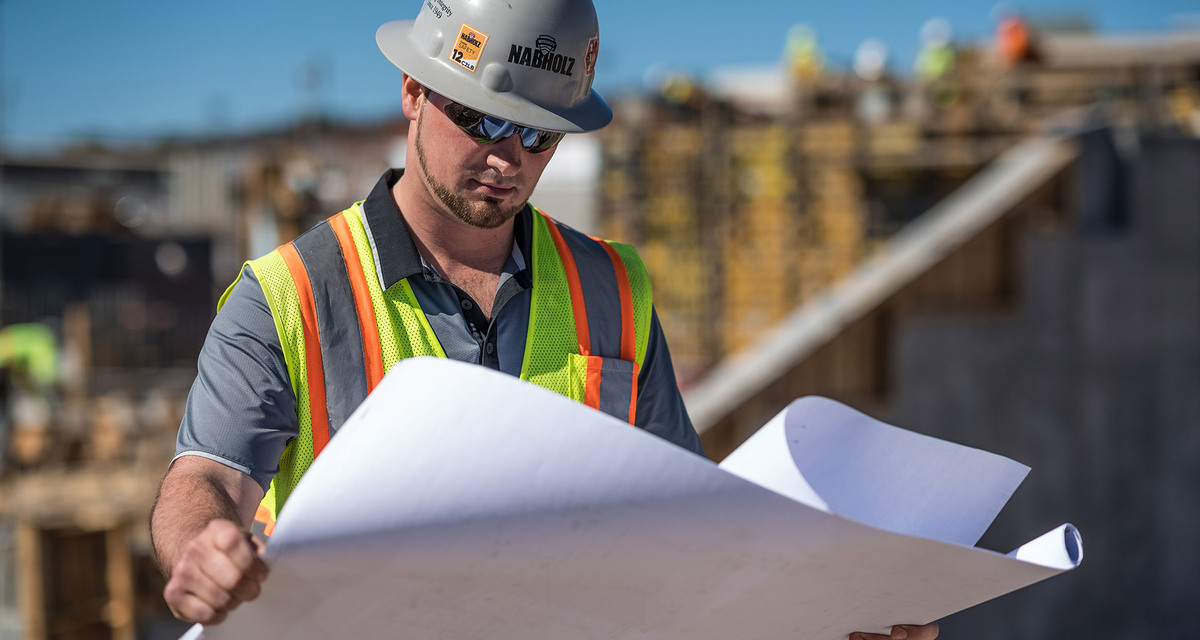

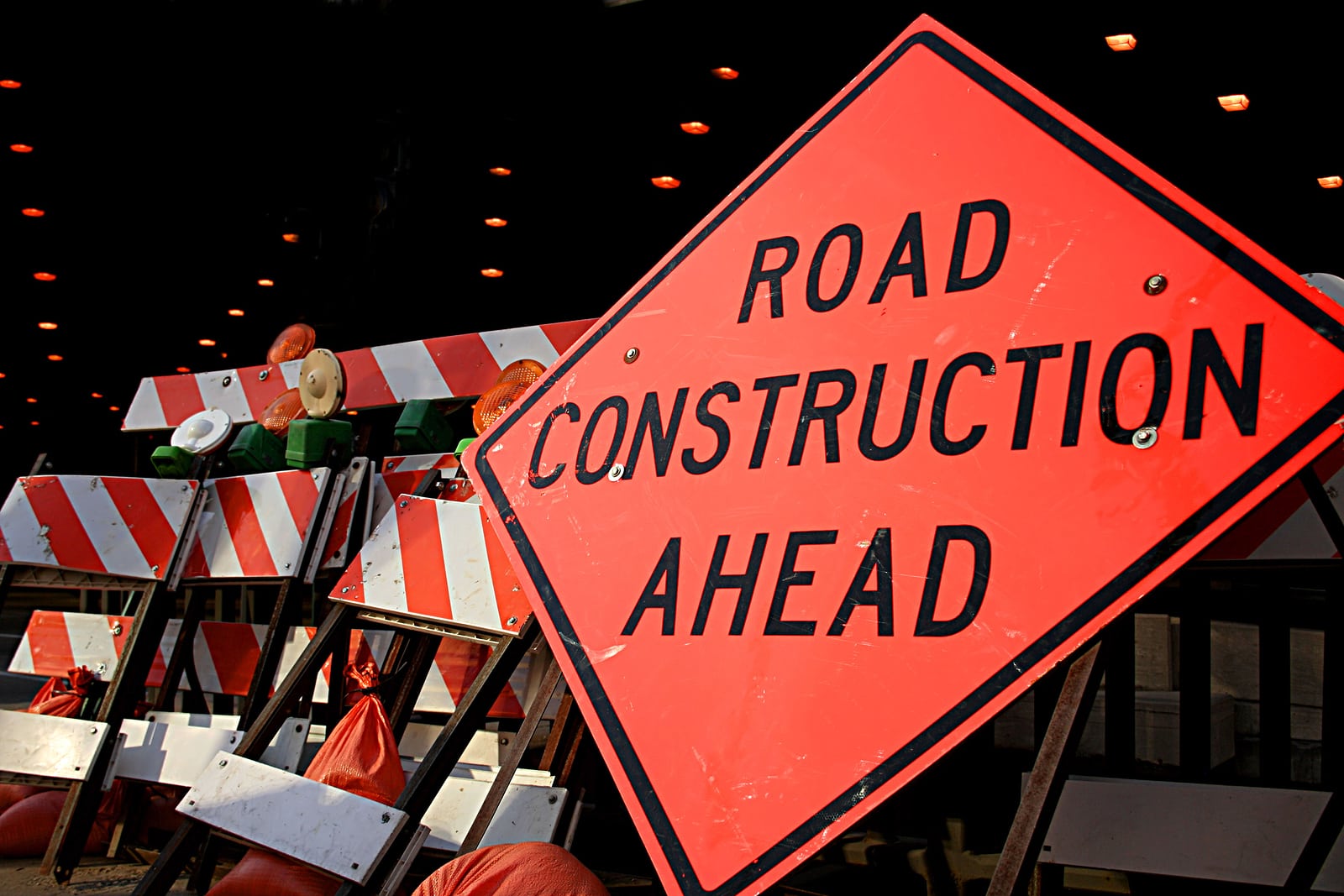

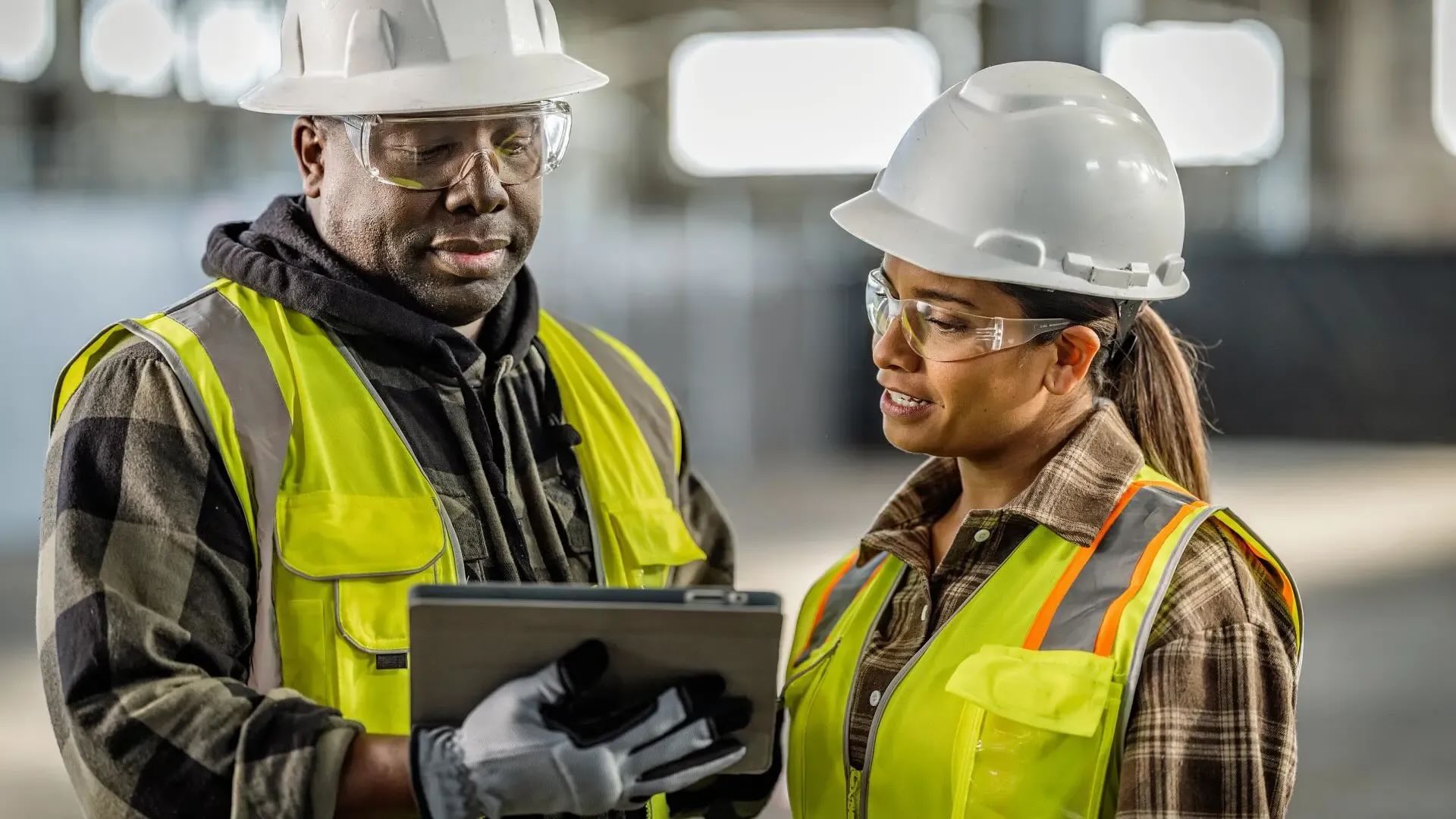

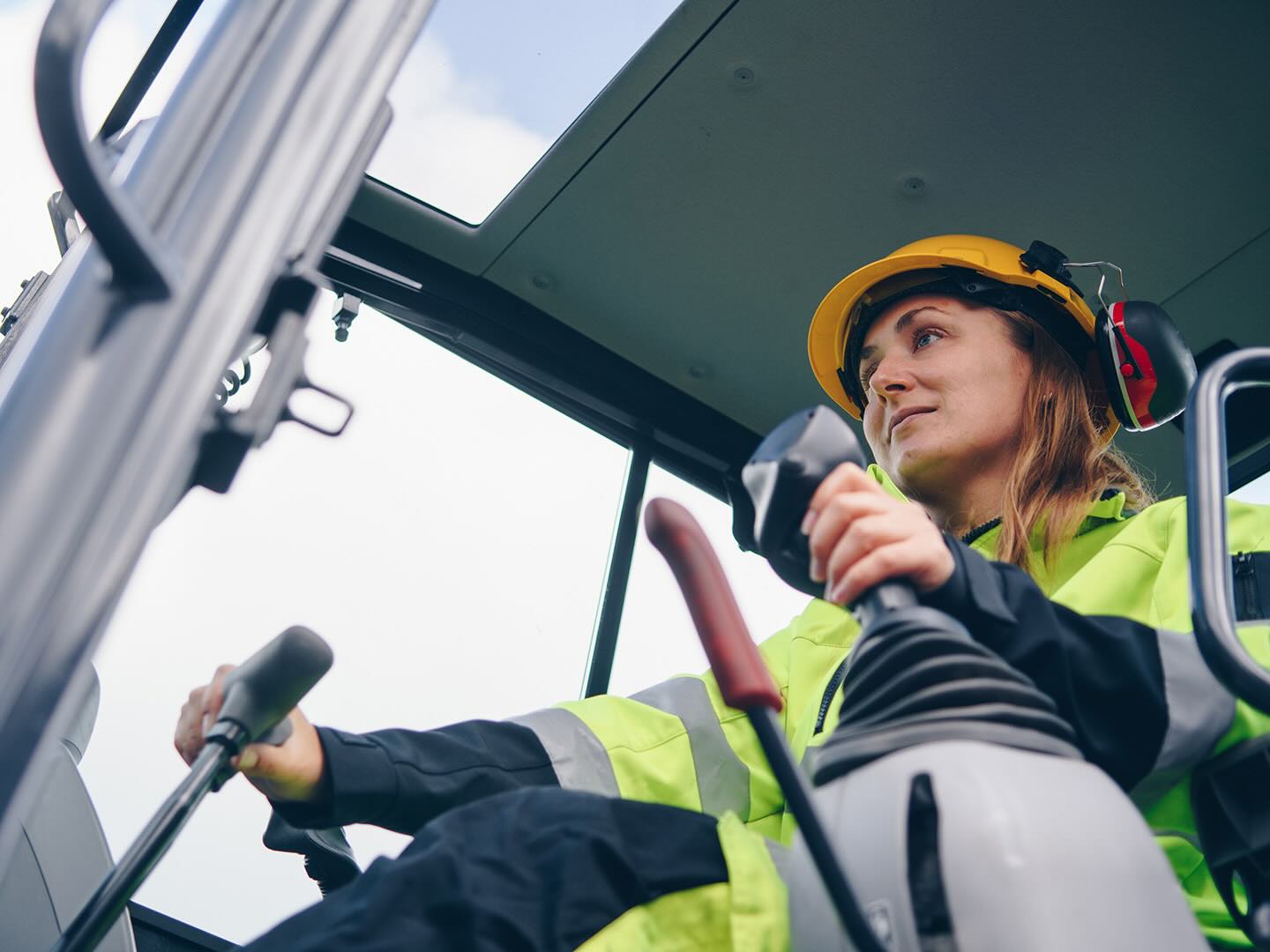
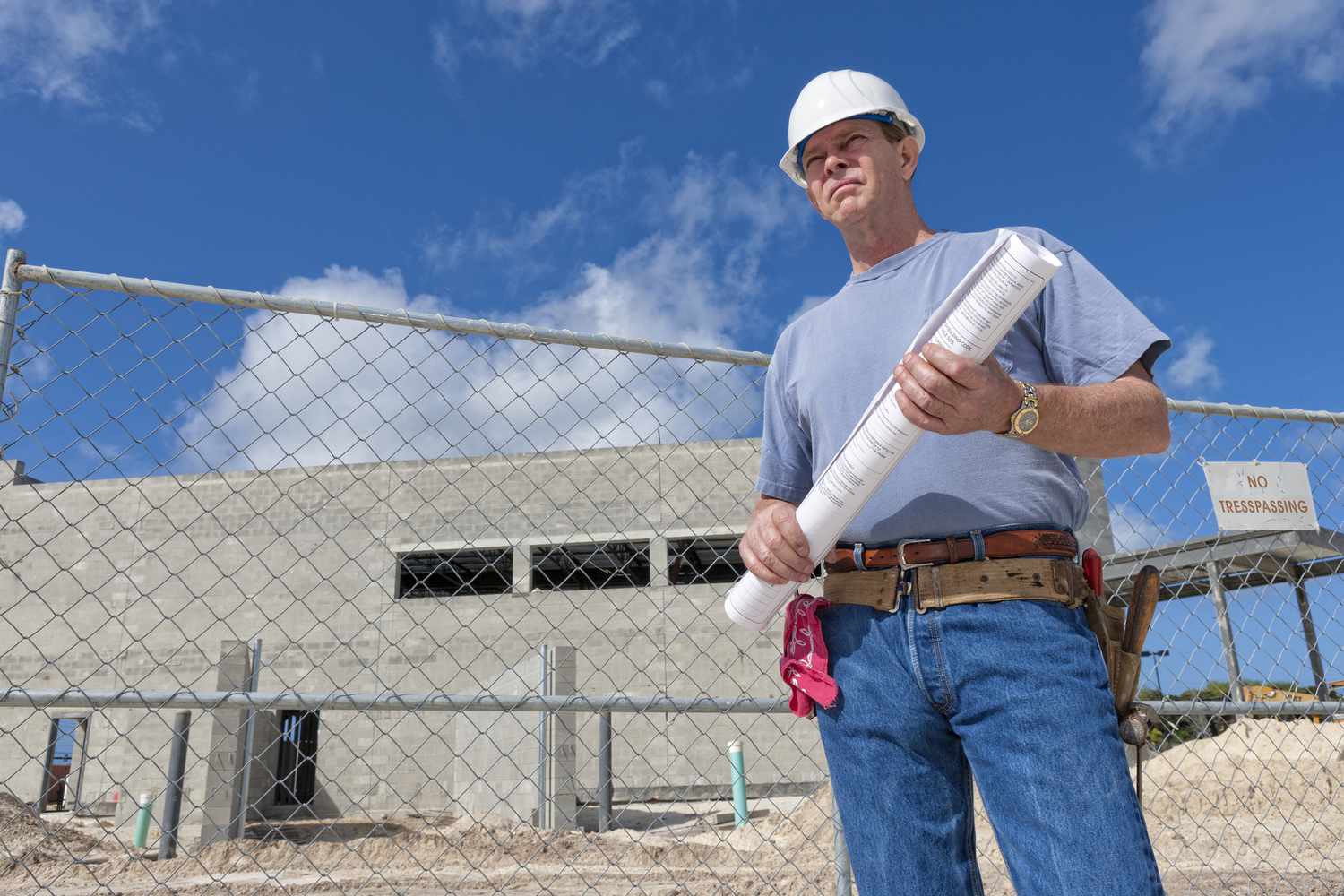
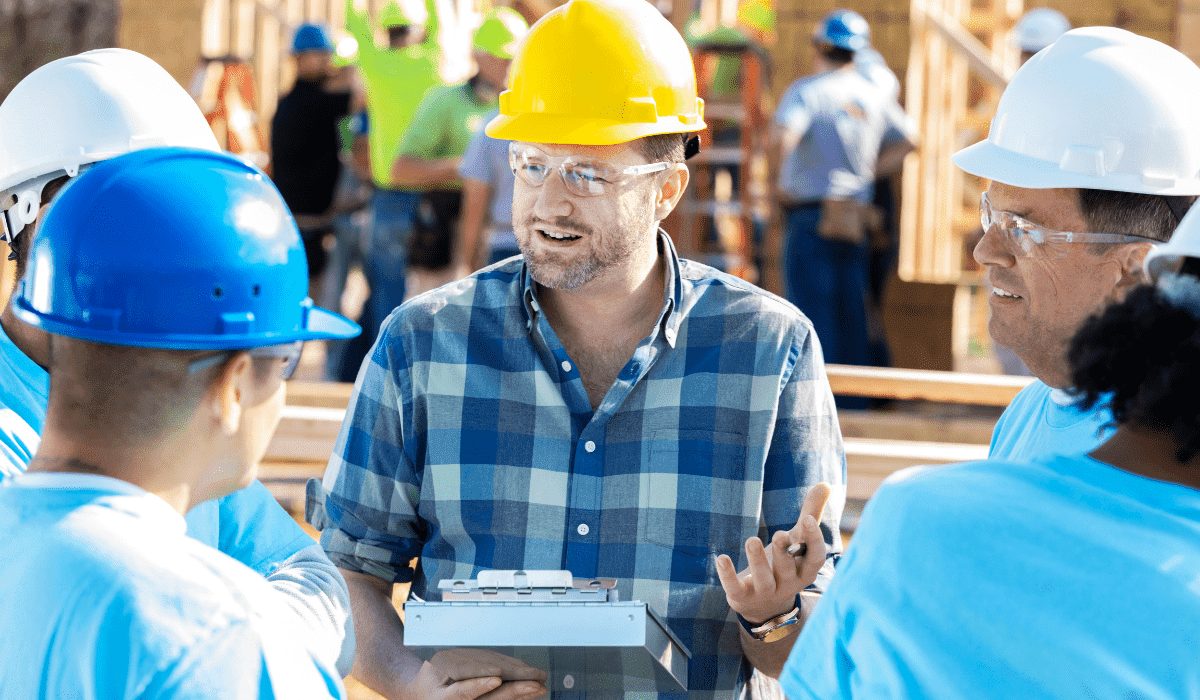

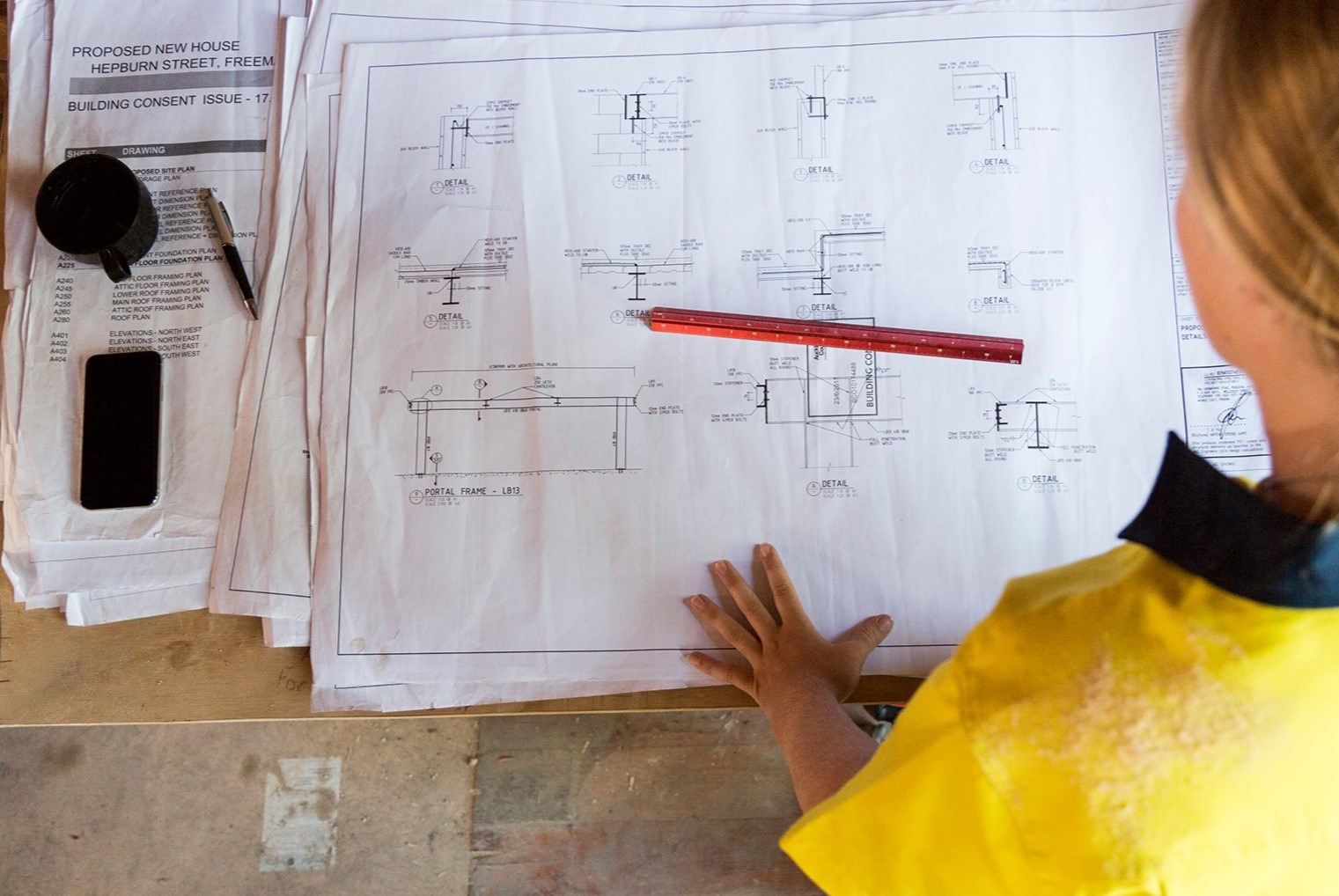



0 thoughts on “How To Become A Safety Officer In Construction”